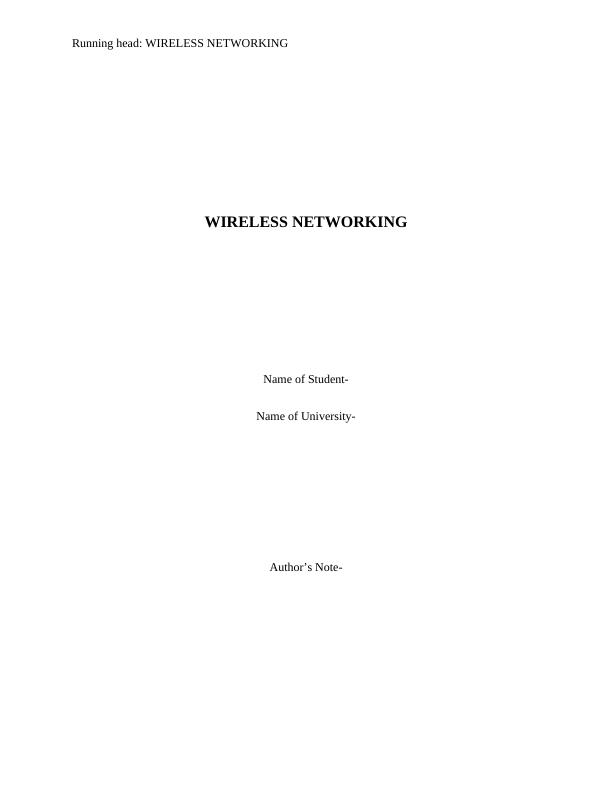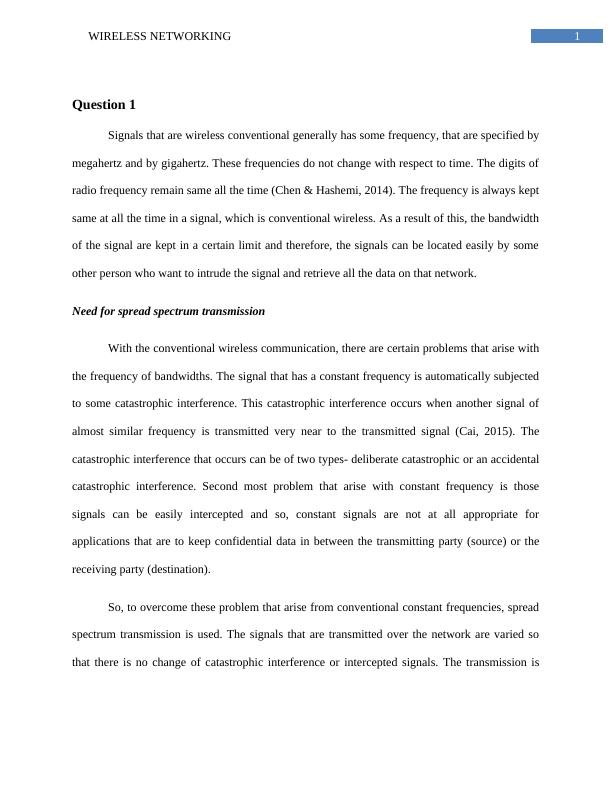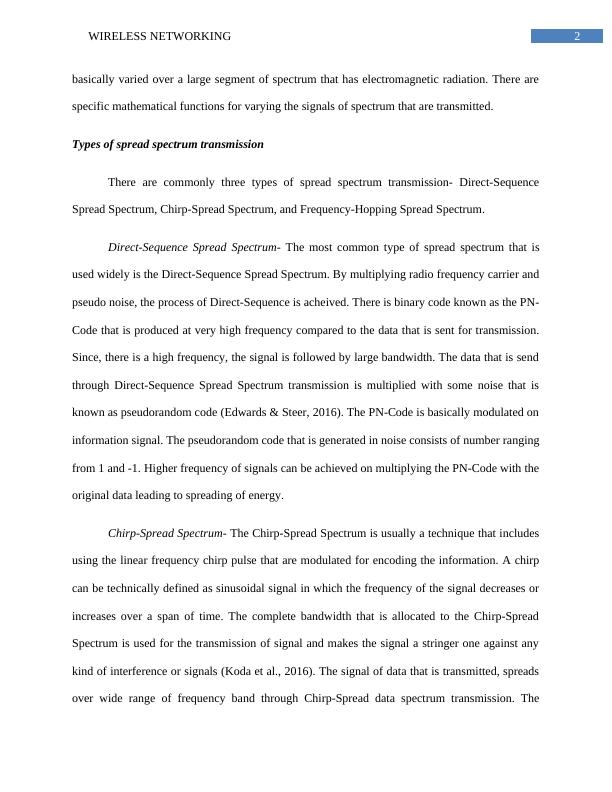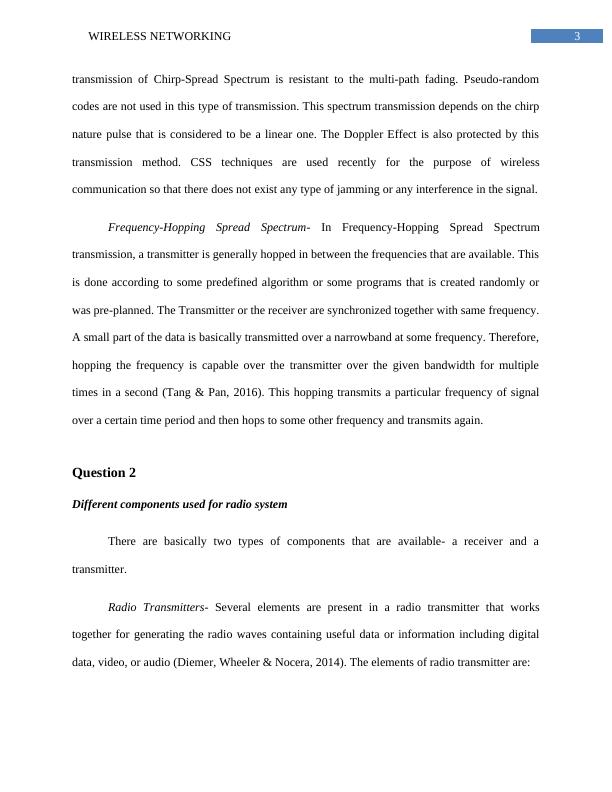Wireless Networking: Spread Spectrum Transmission, Radio System Components, and Mixer Types
13 Pages2263 Words287 Views
Added on 2023-06-15
About This Document
This article discusses the need for spread spectrum transmission and the types of spread spectrum transmission. It also covers the components of radio system and the types of mixer. The article provides a detailed explanation of Direct-Sequence Spread Spectrum, Chirp-Spread Spectrum, and Frequency-Hopping Spread Spectrum. It also explains the elements of radio transmitter and radio receiver. The article concludes with a definition of mixer and its types.
Wireless Networking: Spread Spectrum Transmission, Radio System Components, and Mixer Types
Added on 2023-06-15
ShareRelated Documents
End of preview
Want to access all the pages? Upload your documents or become a member.
Wireless Networking Concepts
|23
|1570
|118
Wireless Network Concepts: Spread Spectrum Transmission, Radio System Components, Advanced Technologies and Antenna Types
|16
|2193
|89
Wireless Networking Concepts
|11
|1089
|281
Wireless Network Concepts
|18
|2132
|232
Wireless Networking: Components, Mixers, and Spread Spectrum Transmission
|19
|1586
|423
Frequency Hopping Spread Spectrum (FHSS)
|4
|2955
|416




